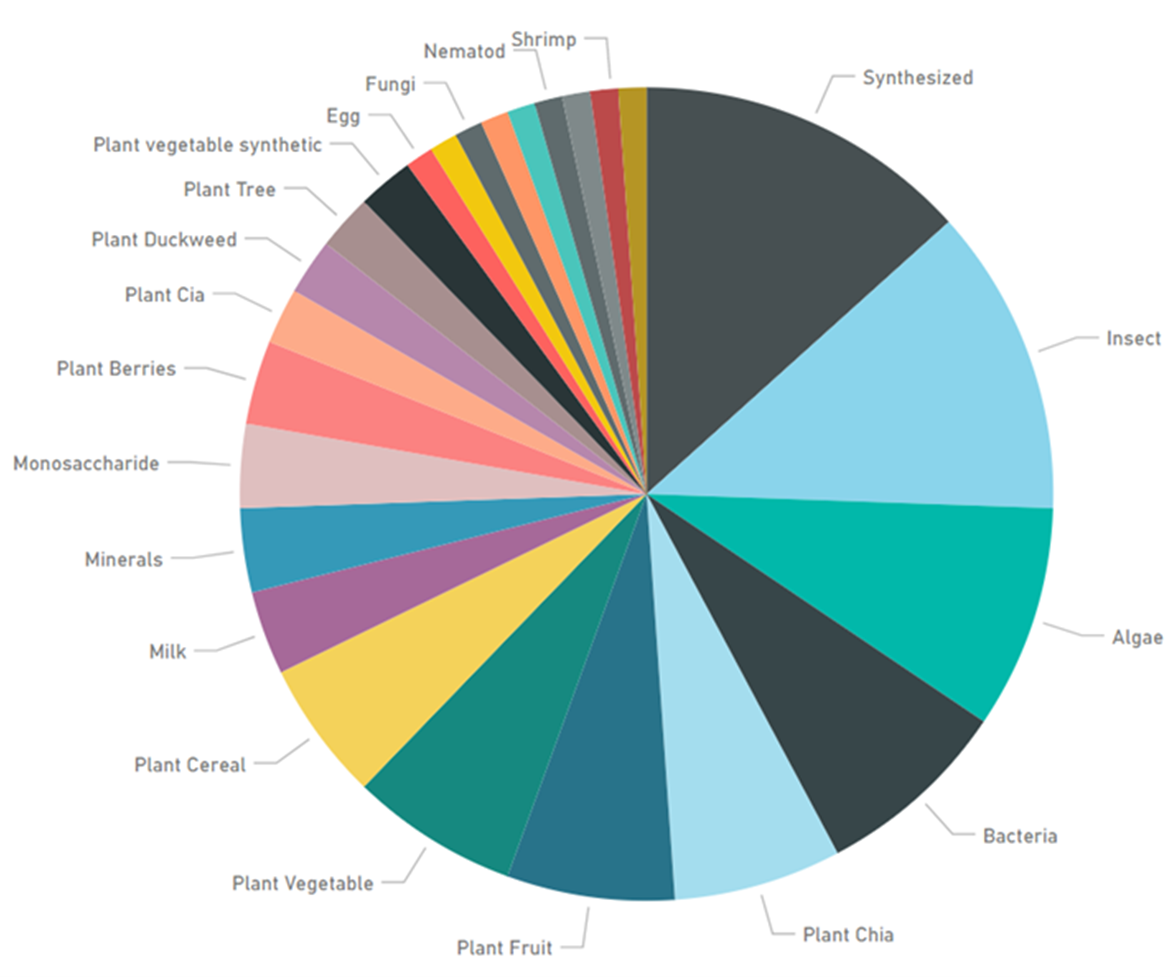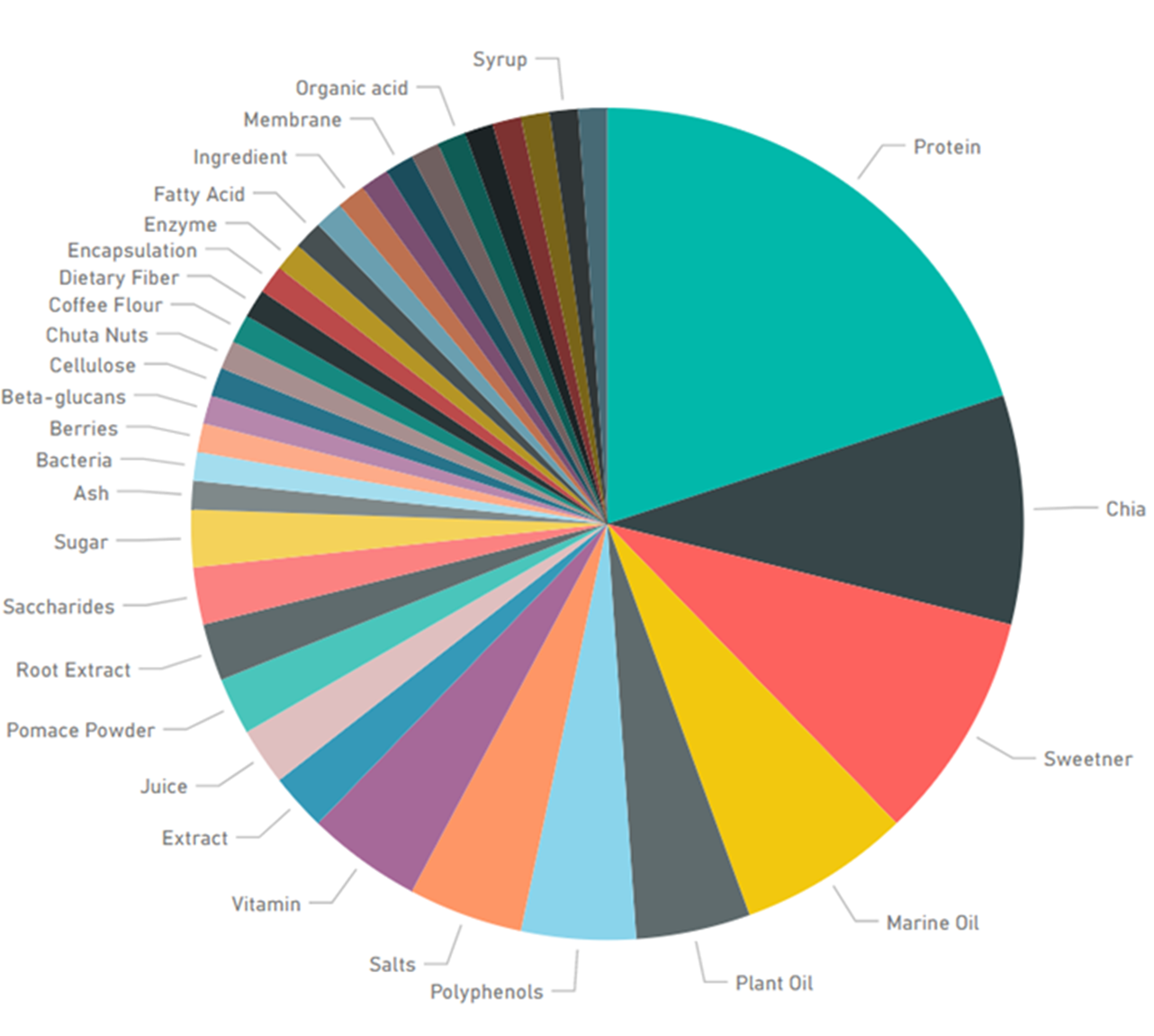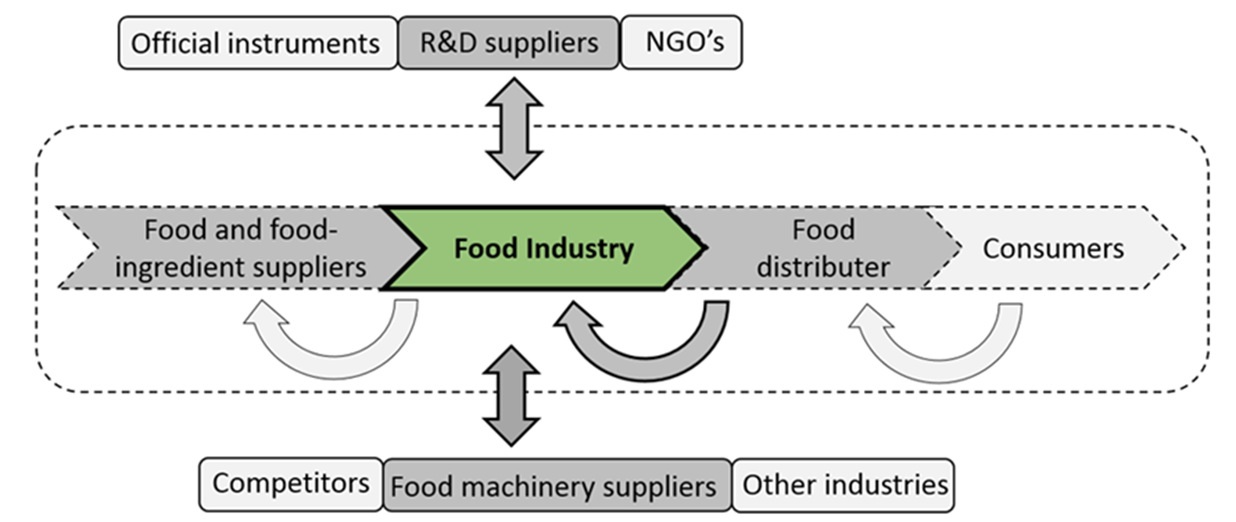Worth knowing about food innovation
What can we expect from new food products and what does it take to get them into the shops? Research shows that enforced transparency can help the food industry to play well together.
Healthy and more sustainable products
Health, combined with sustainability, are regarded as being the most important drivers of innovation in the food industry. "Sustainability" and "plant-based food" are terms that are today being used five times more often by the Norwegian media compared to four years ago.
This pattern is also apparent in the EU's Novel Food Regulations, which states that brand new food must be approved centrally in the EU. This scheme is transparent and all applications after 2018 are open to everyone.

The figure above shows what plans the food industry has for brand new products. New processing technologies and raw materials can potentially pave the way for completely new products that it has not previously been possible to produce, or legally sell, as food. Some examples of this can be found by categorising the Novel Food applications submitted to the EU.
We call this phenomenon "technology push". It represents the opposite of user-driven innovation, since very few customers in the food shops ask for protein-enriched bread with algal or insect flour. The figure below shows that insects, algae and bacteria, along with a lot of plant foods, dominate the raw materials for which Novel Food approval is being applied for.

Trends: new sources of protein and cooking oils
When we combine these two pie charts with the data relating to Novel Food applications, we see that protein from new sources such as insects and algae could become ingredients in radically new foods in the future.
Furthermore, we are also seeing many applications relating to new sources of cooking oils. Novel Food Applications are being dominated by radically new plant food ingredients.
In the EU's open Novel Food application register, we also see that Danish companies are the most forward-looking when it comes to radically new food ingredients, followed by France, the USA and Germany. Almost half of these companies are applying at the same time for 5-year protection in order to be alone in the market at the start.
What will innovation in the food industry be like?
Open innovation is widely used as a phenomenon whereby sharing should pay off for all those parties contributing to the development of new products. New product concepts are rarely good ones until they have been processed and discussed with several others. That is why innovation researchers are concerned with collaboration, sharing, trust and protection.
The food industry in Norway has deep roots. Several of the companies in the industry are among Norway's largest companies, but there are also many small and medium-sized enterprises in this sector.

There is considerable variation, but we often see that suppliers of ingredients and raw materials have important roles along with research and development (R&D) providers, as illustrated in the figure above. We know that companies cooperate and share knowledge, but we also see that companies deliberately select those partners with whom they wish to engage in innovation. There is a pattern whereby radical food innovations have involved several people in the process, and R&D is often included.
What is required in order to bring radically new food products into the shops?
If processes or ingredients are completely new, Novel Food approval is required in order to sell brand new food products. However, these new products rarely fall under these regulations. At the same time, it is interesting to keep track of trends through such applications.
We can also learn about selective transparency and conscious strategy on how companies share while simultaneously protecting their knowledge and obtaining clarification about who owns what through open innovation processes. It may be a paradox that patents ensure transparency, but once a patent has first been approved, ownership is clarified and everything can be shared.
| Title | Author(s) | Year | |
|---|---|---|---|
| Radical innovation in a conservative industry. Selected cases of new product development in the Norwegian food industry. | Sveinung Grimsby | 2021 | Go to publication |
